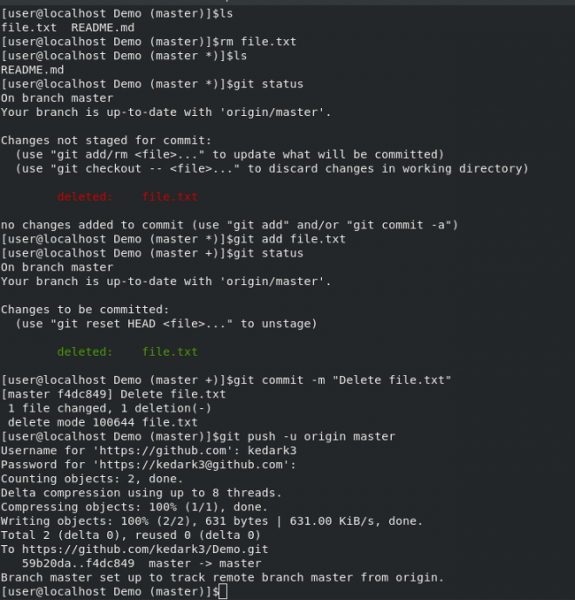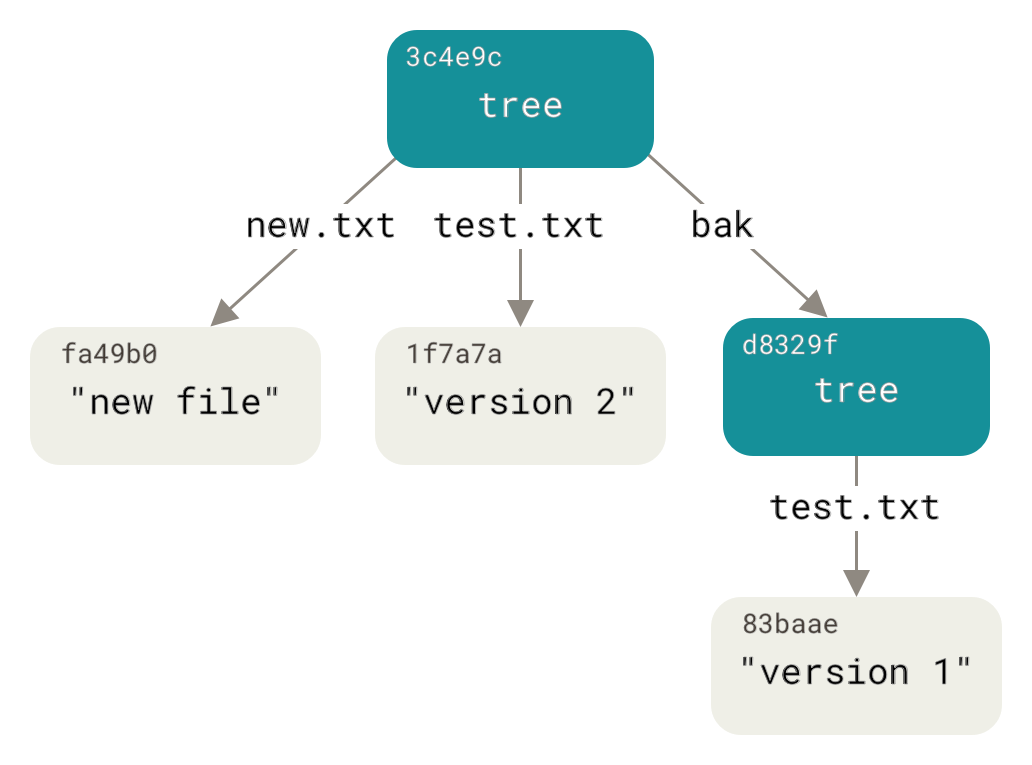

- #Git list directory contents software
- #Git list directory contents code
- #Git list directory contents series
tells Git that you want the next commit to contain the current version of that file/these files. Git diff HEAD will show you the changes of your working directory relative to the current commit.

Essential Git commandsĮxcept for the clone command, this follows the common workflow:

If the commandline is not your favorite playground you can have a look at the Git integration EGit in the Eclipse IDE. If you feel comfortable in using the commandline but you are still not familiar with Git the Git workshop page might be a perfect entry point for you. Once you become proficient, Git is a huge asset to any development project. The only negative to Git is the activation barrier of learning it. Work on multiple new features or bug-fixes simultaneously, easily organizing and switching between them using branches.
#Git list directory contents code
Ensure the code and history is never lost, even if your machine fails-anyone with a clone of the repository has a copy of the entire history.Easily find the commit which introduced such a regression.Recover any past revision, such as when the latest version suffers from a bug (i.e., a regression) not present in an older version.

Study the history of a project to understand not only what the developers did when, but also why by reading their commit messages (i.e., the log of changes).Git can tell you which changes you made relative to the current commit-quickly! Git makes it not only to record what you did, it makes it easy to follow the development of other developers, and integrate those changes ( merge in Git speak).Įven if we are all brilliant developers, from time to time the program appears to be completely broken by our work. To collaborate with others, there are also remote repositories from where you can clone, and with which you can synchronize by fetching and pushing. To make a new commit, you first tell Git what changed contents you want to be part of the new commit by adding (or staging) them, and then performing the commit itself, which will open an editor in which you can type the commit message.Īll Git-specific things, such as revisions, are stored in the repository, which lives in the subdirectory. comparing a revision to the previous one), one can see the changes introduced by the “child” commit.Ĭommits contain the names and contents of the tracked files, information about the author (and the committer, who does not need to be the author), the time of the commit, and a commit message where the author should say what the reasons for the changes are. By comparing a commit to its parent commit (i.e. In the common case, commits form something like a perl of revisions. Each commit knows about its predecessors. The timeline of the development is made up of revisions ( commits in Git speak) of the source code. class files they are generated from the source code, so they are uninteresting). files which are version-controlled) and untracked files (for example. The source code lives in a working directory, where you have tracked files (i.e. The purpose is to track the development of source code through time, along with useful side information: Who did it? When? Why? Principles of Git Git is a distributed Version Control System (“VCS”), or Source Code Management tool (“SCM”). 7.6 Git Tools - Rewriting History from the Git book.Rewriting history tutorial from Atlassian.Advanced topic branch editing section of the Git topic branches tutorial.Modifying your commits section of the Contributing to a plugin page.Learn Git Branching is an interactive web tool where you can work through exercises covering a range of topics, including rebasing and rewriting history.There are many guides available here and elsewhere: This is a powerful technique worth learning.
#Git list directory contents series
One of the most powerful things Git can do is rewrite a series of patches after the fact. This website has lots of tutorials on Git see the left sidebar. Git history, which is composed of “snapshots” of the source code, can be used to go back at any point in time, which leads to reproducible science.Git is a first-class distributed version control system, so we use it to keep a record of changes to avoid loss-of-work and to appropriately explain/document changes as projects develop.See the source code page for information on where the Git repositories reside.
#Git list directory contents software


 0 kommentar(er)
0 kommentar(er)
